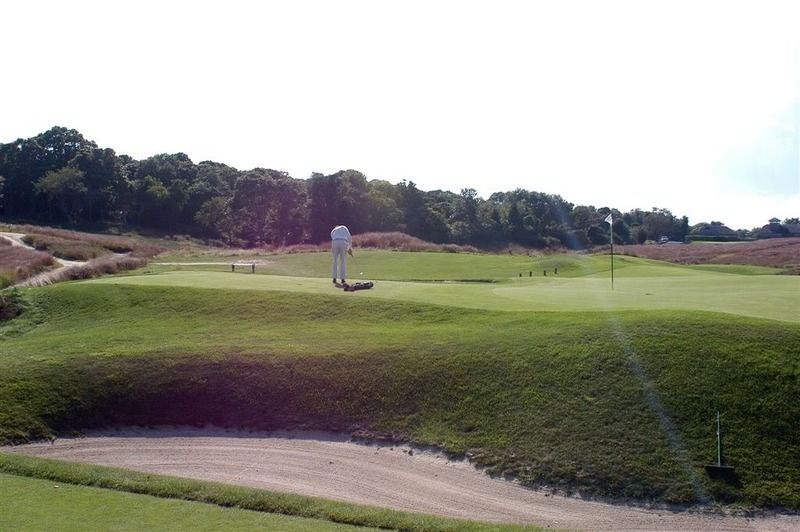David Moriarty,
Phrased another way, was NGLA the new benchmark or gold standard for American golf in 1909 ?
Most definitely. But more than that, it changed the direction of the development of gca in America. It wasn't as if CBM just went beyond what was previously considered good. NGLA drastically altered what the American golf establishment thought golf courses could be in this country. Yes it was much better than most of what was out there, and it was fundamentally different as well.
Doesn't one have to play NGLA to appreciate and understand CBM's influence on golf in America ?
Maybe others are able to figure it out on their own, but seeing NGLA was certainly an awakening for me, and where I began to understand that there were similar threads running through most if not all great golf course design.
___________________________________________________________________________________
I agree with your responses and last summary of the topic. Because I'm ambivalent about a lot of our classic designs being invested in ultra-exclusive clubs, I wish I had a better argument to refute the very last rhetorical question you posed: "Doesn't one have to play NGLA to appreciate and understand CBM's influence on golf in America ?"
That's a hard call because I can think of many GCA scientists and eager-to-learn critics not getting the opportunity. I had all the local golf juice and well-heeled friends you could ever want (without being a PGA member) and National was a tough "get." Tougher still if you really wanted to have the experience of the course with a couple of regular friends, which is as important to me as the whole damn enterprise.
I can relate to what you are saying here. I don't think it was always this way; given that the course was originally meant to be an exemplar of quality golf design. But times change, and and with the trophy hunters out their today I can't say I blame the membership for mostly keeping to themselves.
Thankfully Old Macdonald will be open to the rabble, and my hope is that OM will prove to be much more than an excellent golf course in that it will remind those who look carefully just
what makes any great golf course great. That's not too much to ask for, is it George and Tom?

______________________________________________________________________
Bill McBride,
I am not sure if you do, but I am not quite getting the distinction that TEPaul is trying to make. Here is a photo from behind the first green, with a smooth swinging lefty putting to a far right pin. If he had been playing right-handed, he'd have been teeing off on the 2nd hole. Is that the tee you used? Maybe TEPaul did not realize that they were again using this tee.

On the plasticine model the green looks the same and the tee is in approximately that spot.
_________________________________________________________________________
George, no doubt you have everything I do. I haven't found any photos taken during the gap you note, which is why I wonder how why people think that the bunkers were changed under Macdonald's watch.